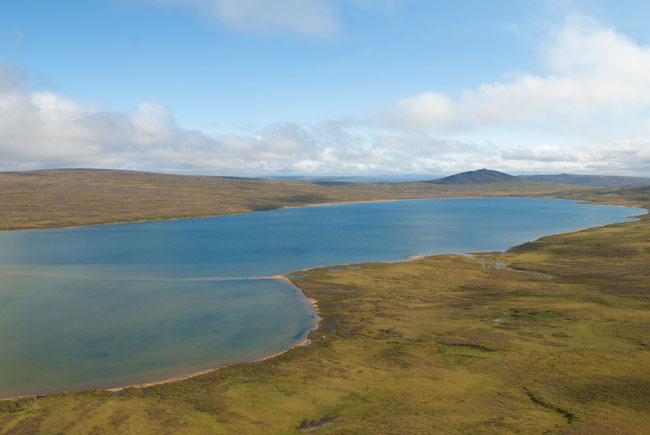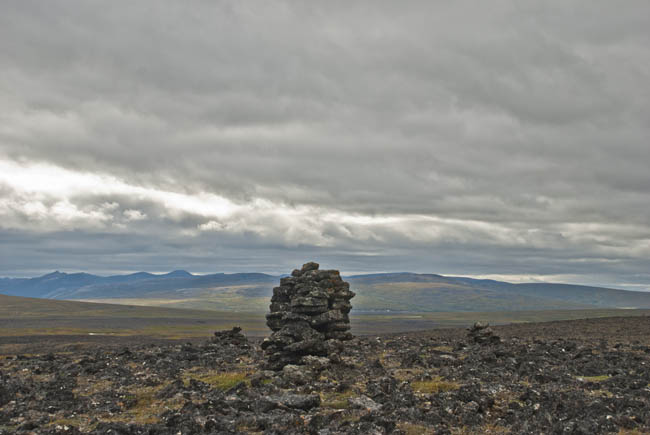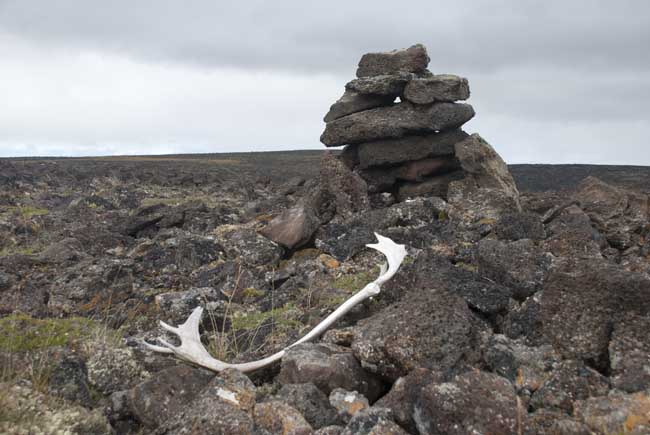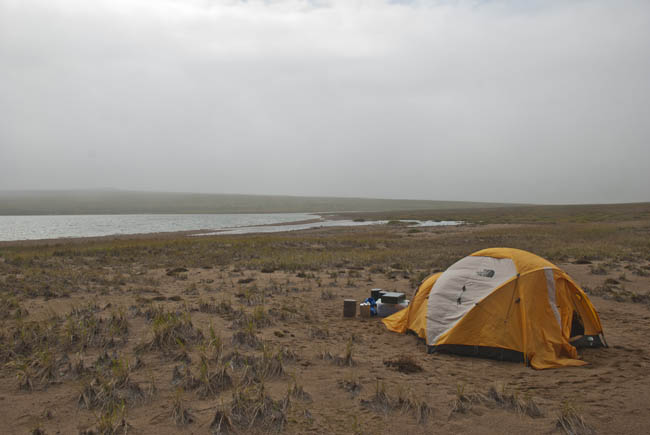Bundled up in my sleeping bag, I'm sitting in a tent in the middle of the tundra, getting pounded by sideways rain and 35mph gusts with temperatures hovering just above freezing. I've been in here for almost two days straight now, a violent tempest trapping me within the confines of these thin walls, unable to venture out to take photos or film.
Fortunately, the week didn't start out this way. On Monday, I was dropped off in the southeastern region of the preserve under sunny skies and a mild breeze, on assignment to document this area for the visitor's guide.

After setting up camp, my supervisor and I hiked the mile and a half up to the geological features that make this place so unique. Just 60 miles or so from the Arctic Circle you might not expect to find volcanic activity, but in fact the region is shaped by an intense volcanic past. Created by the emptying of underground magma chambers through a large eruption, all that remains are some inactive cauldron-like features, known as calderas, surrounded by vast lava flows.
What makes this area even more special is the archaeological evidence of prehistoric and historic human activity. Dating back 4,000 to several hundred years ago, archaeologists are still unsure of the purposes of the large stone structures that stand along the rims of the calderas. Hiking up the lava flows, I could see how this was an incredibly resource-rich area, hosting multiple tribal territories and exuding a powerful presence reflected in the monumental architecture.

Because of the remoteness of this area, the importance of preserving the archaeological site cannot be emphasized enough. As one of the more difficult places to get out to in the preserve, there is still much learn from the artifacts here, and these must remain undisturbed in order to help us uncover its relatively unknown history.

While on the very top of the caldera rim, we noticed a sheet of rain approaching from the direction of the lake, where we had set up camp. Little did we know, this was the beginning of the end of our fair weather.
By the time we got back down, our cook tent had collapsed and wind speeds were picking up. Optimistically, we thought things would clear up the next day and I could get out to shoot more photos, but in fact it only got worse from there.
And that's how I found myself stuck in a tent in the middle of a tundra storm. Fortunately I managed to get some decent pictures the first day, but for the next two days and nights conditions were too poor to take out the cameras without totally ruining all our equipment.
By mid-week, there was a break in the weather long enough for the pilot to come pick us up, and we had to make the difficult decision to cut the operation short and head back to civilization. It turned out to be a good choice too, as the weather deteriorated again for the rest of the week, grounding flights back in Nome until the weekend.

Despite the less than ideal weather - or perhaps because of it - my trip to to this region was one I'll always remember. To experience the raw wilderness of Bering Land Bridge National Preserve like that was not only a personal challenge, but also an opportunity to reflect on its natural and human history, and to gain a better understanding of my own role as a steward of this incredible area.
Bio
My name is Andrea Willingham and I am the SCA Multimedia and Graphic Design Intern for Bering Land Bridge National Preserve. Over the next 9 months, I will be creating the new visitor's guide and brochures for BELA, as well as helping manage the preserve's social media. Originally from Florida, I graduated from Eckerd College in 2012 with degrees in Environmental Studies and Anthropology, so coming to work at BELA has been an amazing opportunity to pursue both of these fields and contribute my work to the National Park Service.
